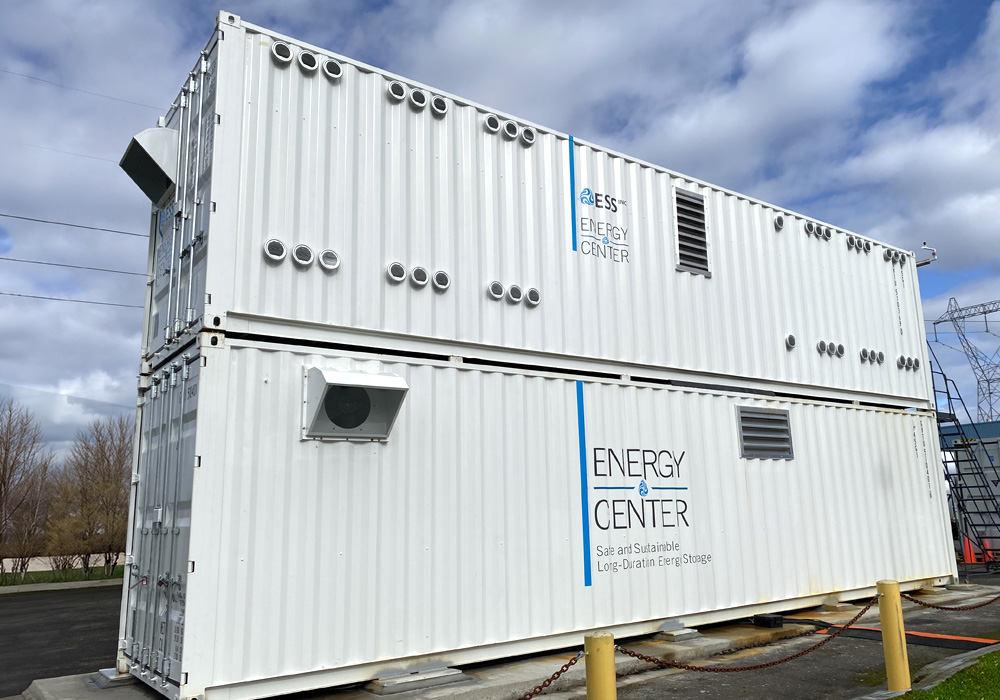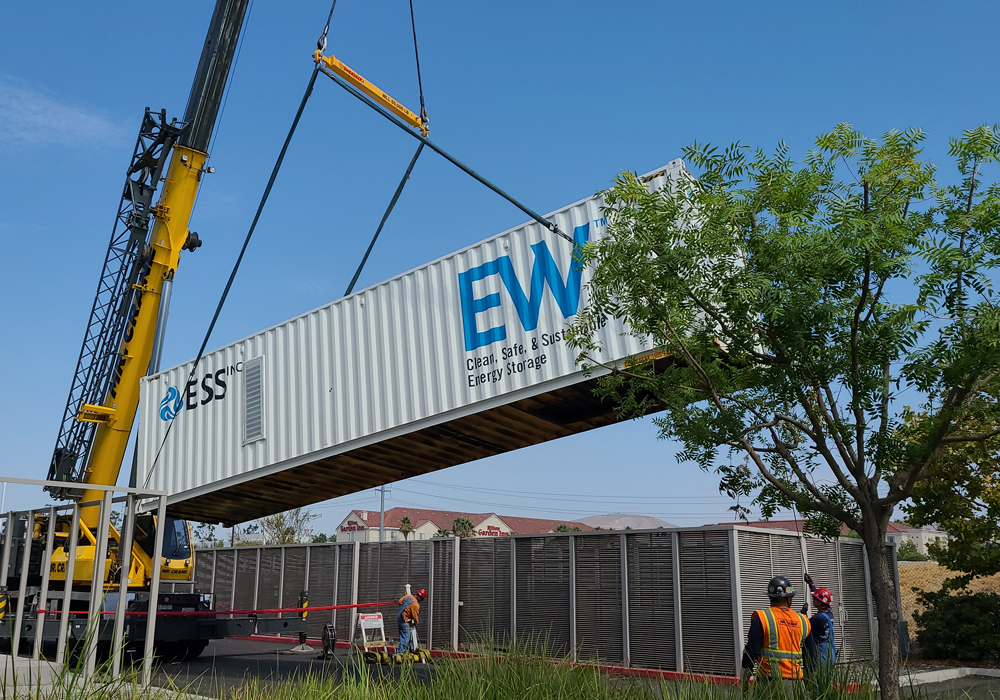Industrial Microgrids
Take control of energy costs and improve resiliency

Long-duration energy storage provides industrial energy users with backup power and flexibility to manage energy resources and costs.
ESS Tech, Inc. (ESS) delivers scalable energy storage solutions that provide resilient backup power while allowing industrial energy users to manage their energy costs and integrate intermittent sources of clean energy.
The ESS Energy Center™ delivers at least eight hours of energy in scalable building blocks. This solution is ideal for campus-sized microgrid projects.




Energy Storage
Use Cases
Behind-the-meter renewable energy time shifting
Demand charge management
Time-of-use tariff arbitrage
Energy security
Utility ancillary services (where allowed)
Load following remote grid
Improve generation efficiency
Downloads
Manage demand charges
Demand charges can make up as much as half a C&I electricity customer’s energy bill. Tap into an ESS Energy Center during peaks, when demand charges are highest, and reduce energy costs.
Leverage time-of-use (TOU) rates
If your power provider offers time-based rates, save by charging an Energy Center off-peak when rates are low and discharging when rates rise.
Maximize solar investments
Don’t let unused solar power get exported to the grid for pennies. Store that energy for use when needed to avoid paying retail rates for consumption when needed.
Enhance your energy security
Long-duration energy storage delivers reliable backup power when grid power is unavailable due to a Public Safety Power Shutoff, extreme weather, equipment malfunction, or other unplanned interruption. ESS technology can deliver up to 12 hours of capacity to keep the lights on when the grid goes dark.
Gain revenue with market opportunities
Depending on location, it may be possible to use storage assets to participate in energy markets that support grid frequency, voltage and reliability.
Support corporate ESG targets and build your brand
Increasingly, Environment, Social and Governance (ESG) performance is a major concern of customers and investors alike. Adding ESS’ sustainable long-duration energy storage technology can maximize use of renewable energy with a safe and sustainable technology with the lowest carbon footprint on the market.
Use case
Pennsylvania microgrid
This video showcases the installation of a microgrid project that includes an ESS Energy Warehouse® system at an industrial recycling facility in West Grove, Pennsylvania. The project was developed by TerraSol Energies, Inc., a developer and operator of turnkey solar and storage solutions for commercial customers.
The ESS Energy Warehouse is integrated with a 115 kW DC solar array to form a microgrid which will reduce peak electricity demand and provide back-up at Sycamore International, a technology recycling company working to enable a global circular economy. The project was showcased at a ribbon-cutting event at the Sycamore International industrial recycling facility, with attendees including U.S. Representative Chrissy Houlahan (PA-06).
